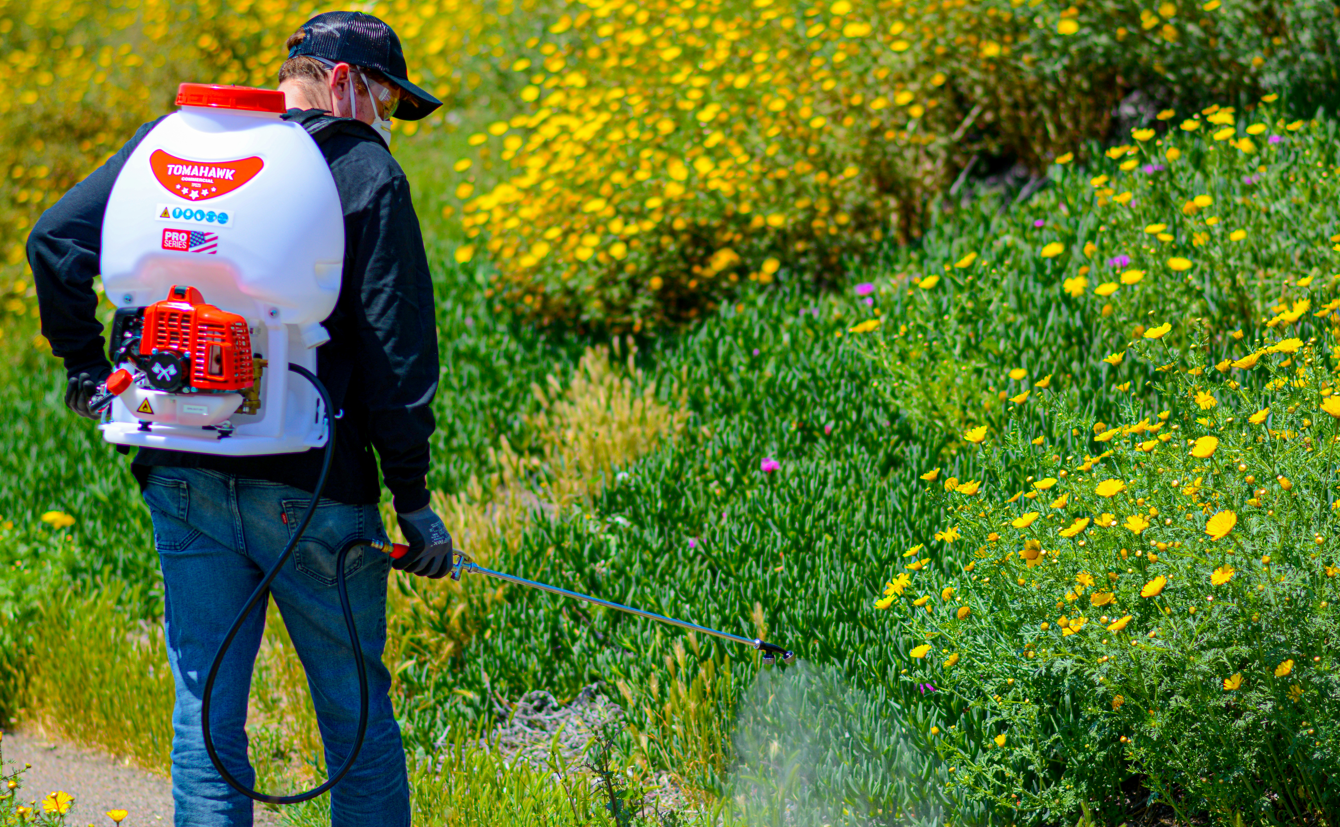Insects, bacteria, and others organisms are all part of the environment's cycle. They benefit us in many ways, but they can also be pests. When it comes to pest management, there are numerous methods, applications, and equipment available. Pest control is a process that needs consistent upkeep and monitoring. Preventing pests is easier than controlling them, thus we suggest one of the best methods in the industry called, “Directed-Spray Application.”
Directed-Spray Application. plays a significant role in organic farms which require modern applications of equipment with the best ease-of-use for the operator. In order to understand the importance of the right equipment for the right job, we will break down sprayers by types, parts, application, and recommendations. Here are few things to keep in mind when picking sprayers for the right application. Ask yourself first:
1) What is the main issue with my crops?
2) How much knowledge do I have on pesticides and the appropriate equipment?
3) How much pest control is needed?
4) What equipment will be suitable to do the job at a reasonable cost or budget?
5) How easy is the equipment to operate and
maintain?
Types of sprayers:
Overall, the primary goal of sprayers is to facilitate the application of pesticides with a uniform distribution of pesticides. The two main types of sprayers are hydraulic and low-volume. According to the Greenhouse Product News, hydraulic sprayers are capable of a higher ration distribution, contrary to low-volume sprayers, which develop almost half mist of hydraulic sprayers. Nowadays Backpack Sprayers combine high-tech engineering and user-friendly designs to make them more comfortable than ever. A mist or fog applicator can lead to a more uniform spread, meaning higher chances of contact with the insect and better coverage of plants from top to bottom.
Features of Parts:
-
Sprayer parts should be able to resist the chemical used to spray. Here are elements of what a good sprayer should be made of:
-
Tanks: The tank’s primary function is to carry the pesticide solution. It is important to highlight that most tanks are made of a plastic giving a translucent effect. Clear tanks show liquid levels and help to estimate the time left until a refill is needed. Additionally, the tank’s lid should be practical for easy filling and large enough to allow for easy cleaning.
-
Pump: Most pumps consist of a piston and centrifugal pumps. The best ones are made of brass, but it is also important to look at the pressure range that a pump can handle - according to the rated gallons per minute and the desired PSI (pounds per square inch).
-
Hoses: Hoses can be made of neoprene, rubber, or plastic. It is important that they can resist chemicals, extreme weather, and tough working conditions. It is necessary to find hoses with high working pressure - almost equal to the operating pressure. Hoses are often the first to deteriorate. If you notice cracks, be sure to replace it right away
-
Pressure regulator: Regulators control and prevent damage when there is an excess of pressure in the system. Keep in mind, different pumps have different regulators. A small pump would include a spring-loaded bypass valve, while unloader valves work more effectively for larger pumps.
-
Engine: The engine converts fuel into mechanical energy with a specific mixing ratio solution of gasoline and oil to produce the necessary heat to create force. A typical ratio of gasoline and oil can be demonstrated as "30:1" - thirty parts gasoline to 1 part oil. A more practical characteristic of a sprayer's engine is its weight. The lighter the engine, the easier to carry around the jobsite.
-
- Nozzles: Nozzles control the amount of pesticides applied, and the distribution of droplets in a pattern. Nozzles are composed of the nozzle body, strainer, interchangeable spray tip, and cap to hold the spray tip on.
Applications & Benefits:
All crops need different pest control applications as you will find in orchards, vineyards, greenhouses, residential areas, or ranches. A high demand in power sprayers is pushing engineers to develop more precise, light, and comfortable equipment, not only for the operator but also for better coverage. As a result, these innovative designs set apart the leaders in this market from the rest of the other agricultural brands. Sprayer accessories should allow the spray of pesticides to penetrate even to the underside of the leaves. It is recommended to use an air circulation system, in order to enhance the distribution of the mist particles. In some cases using fans is very helpful during and after spraying is complete.
Keep Track of Your Results:
Finally, to achieve optimal pest control results we recommend to keep track of your spraying routine, and include observations for future improvement long-term. Maintaining a record of these procedures can be time-consuming, but it is important to include basic information like the name of the pesticide used, mixing ratios, and the outcome of your spraying. You can download our Tomahawk Spray Log template to track your results, here. After all, if we want to see the best results, it is important to make adjustments in every part of the process to master your pest control technique.











